1235 Aluminum Foil
1235 aluminum foil is a foil product processed based on 1235 aluminum alloy, with an aluminum content of not less than 99.35%.
1235 aluminum foil is a high-purity aluminum product. This high purity endows the aluminum foil with various unique properties, making it highly attractive in a range of industrial and consumer applications.
1235 aluminum foil belongs to the 1xxx series commercial pure aluminum alloys. Due to its excellent formability, corrosion resistance, and lightweight characteristics, it is widely used. Because this alloy has comparable performance and higher availability, it is gradually replacing the older 1145 alloy in markets such as packaging and electronics.
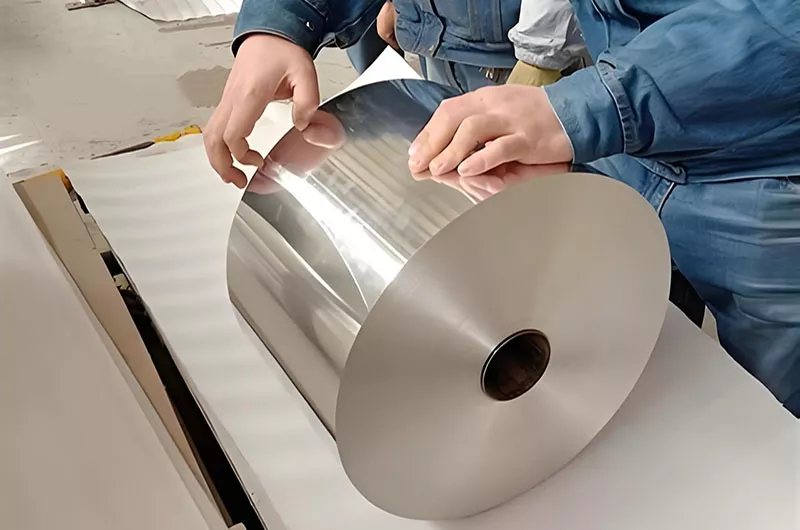
What is aluminum grade 1235?
The minimum aluminum content of 1235 aluminum alloy is 99.35%, making it the most common foil alloy on the market today. Its relatively high aluminum content makes it an excellent alloy for various industrial and food service markets. In the annealed state, it is very easy to process, form, and shape.
1235 Aluminum Foil Information
| Item | Specific Information |
| Chemical Composition | Aluminum (Al) ≥ 99.35% |
| Si + Fe ≤ 0.65% | |
| Cu ≤ 0.05% | |
| Mn ≤ 0.05% | |
| Material Properties | High-purity aluminum with excellent electrical conductivity, corrosion resistance, and workability |
| Temper Specifications | O Temper (Soft): High elongation (≥35%), good flexibility, suitable for deep drawing and forming |
| H18 Temper (Hard): Tensile strength ≥ 135 MPa, high rigidity (e.g., tensile strength ≥ 150 N/mm² at 0.07 mm thickness) | |
| Electrical Conductivity | At 0.07 mm thickness, resistivity as low as 0.32 Ω·m (standard thickness 0.010 mm), suitable for electrical/electronic applications |
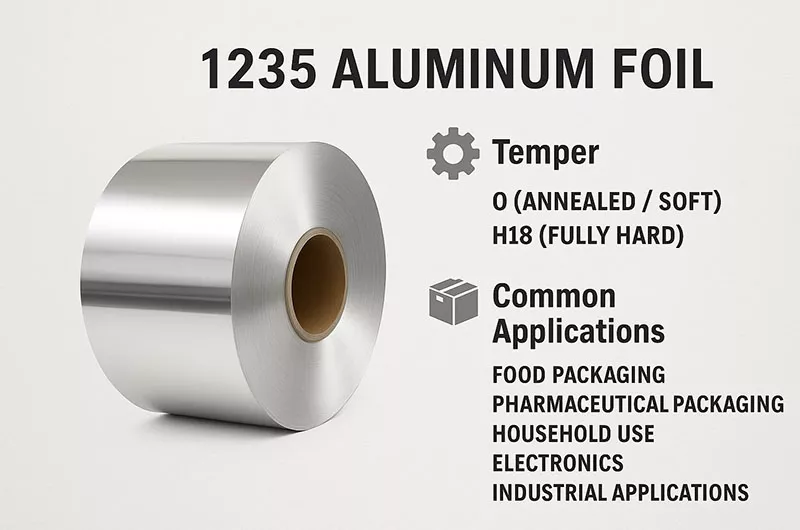
Common 1235 Aluminum Foil Metal Tempers
- 1235 O
- 1235 H18
1235-O aluminum foil substrate is an ideal choice for sealing processing in various fields such as food, medicine, cosmetics, and wine sealing gaskets. It has a flat plate shape, clean surface, and no oil stains. It has high application value and broad prospects.
1235 Aluminum Foil Specifications
| Parameter | Specification Range/Description |
| Thickness | 0.0005 to 0.064 in |
| Width | 0.375 to 60 in (customization supported) |
| Alloy Temper | O, H12, H14, H18, etc. |
| Surface Quality | Free of roll marks, pinholes, oil stains, and other defects |
1235 Aluminum Foil Surface Treatments
- Embossed 1235 Aluminum Foil: Embossed 1235 aluminum foil has a textured surface created through embossing technology. The embossed pattern improves mechanical strength, enhances appearance, and provides better anti-slip and decorative effects. It is widely used in food packaging, insulation, and decorative applications.
- Hydrophilic Coated 1235 Aluminum Foil: This type of 1235 aluminum foil is coated with a hydrophilic layer that allows water to spread evenly on the surface. It is mainly applied in heat exchangers, air conditioners, and refrigeration equipment, where it improves heat transfer efficiency and prevents water droplet accumulation.
- Laminated 1235 Aluminum Foil: Laminated 1235 aluminum foil is combined with paper, plastic film, or other materials through lamination. This structure enhances barrier properties, mechanical strength, and sealing ability, making it ideal for flexible packaging, pharmaceutical packaging, and industrial insulation.
- Color Coated 1235 Aluminum Foil: Color coated 1235 aluminum foil is produced by applying colored coatings to its surface. It provides excellent decorative effects, corrosion resistance, and durability. Commonly used in packaging, decorative panels, and specialty applications requiring visual appeal.
- Coated 1235 Aluminum Foil: This product is treated with functional coatings such as lacquer, adhesive, or protective layers. Coated foil enhances corrosion resistance, printability, and sealing performance. It is widely applied in food containers, pharmaceuticals, and beverage packaging.
- 1235 Plain Aluminum Foil: 1235 plain aluminum foil is the uncoated, untreated version with a smooth, clean surface. It retains the natural properties of aluminum, including high ductility and excellent barrier performance. Commonly used in household foil, basic food packaging, and industrial applications.
- Anodized 1235 Aluminum Foil: Anodized 1235 aluminum foil undergoes an electrochemical oxidation process, forming a protective oxide film on the surface. This treatment enhances corrosion resistance, surface hardness, and decorative appearance. Suitable for architectural, electronic, and decorative uses.
- 1235 Composite Aluminum Foil: Composite 1235 aluminum foil is manufactured by combining aluminum foil with other substrates (such as plastic film, kraft paper, or woven fabric). It provides superior barrier properties, mechanical strength, and tailored performance for packaging, insulation, and industrial purposes.
- Heat Sealing Coated 1235 Aluminum Foil: This type of foil is coated with a special heat-sealable layer, enabling it to bond with other packaging materials when heated. It is extensively used in pharmaceutical blister packs, food lids, and beverage seals for secure and hygienic packaging.
- Hydrophobic 1235 Aluminum Foil: Hydrophobic 1235 aluminum foil is treated with a water-repellent coating that prevents water adherence and droplet formation. It is widely applied in heat exchangers, air conditioning systems, and other applications requiring anti-condensation and anti-corrosion performance.
Haomei 1235 Aluminum Foil: Quality Assurance
Haomei, as a highly specialized manufacturer of aluminum foil conversion base materials, has a strict quality control system and extensive industry experience. The company provides 1235 aluminum foil products that consistently meet performance specifications for packaging and household markets, whether in coil, sheet, or custom-cut pieces for flexible packaging, lids, household kitchen applications, or other uses.
- Strict thickness tolerance (±4%) and clean-cut edges.
- Customizable dimensions and tempering to meet specific needs.
- Compliance with international standards (ISO, ASTM) and third-party inspections.
1235 Aluminum Foil Surface and Process Quality
- Clean surface free of oil, discoloration, roll marks, pinholes, or creases
- Flat plate shape with strong bonding and adhesion properties, suitable for composite processing
1235 Aluminum Foil Manufacturing and Quality Control
- Production: Cold rolled to precise thickness (0.006–0.2 mm), width (10–1700 mm), and custom lengths
- Surface Treatment: Options include embossing, hydrophilic/hydrophobic coating, lamination, and color printing
- Quality Standards: Compliant with ASTM B479/AMS-QQ-A-1876 standards. Thickness tolerance ≤ ±4%, defect-free surface
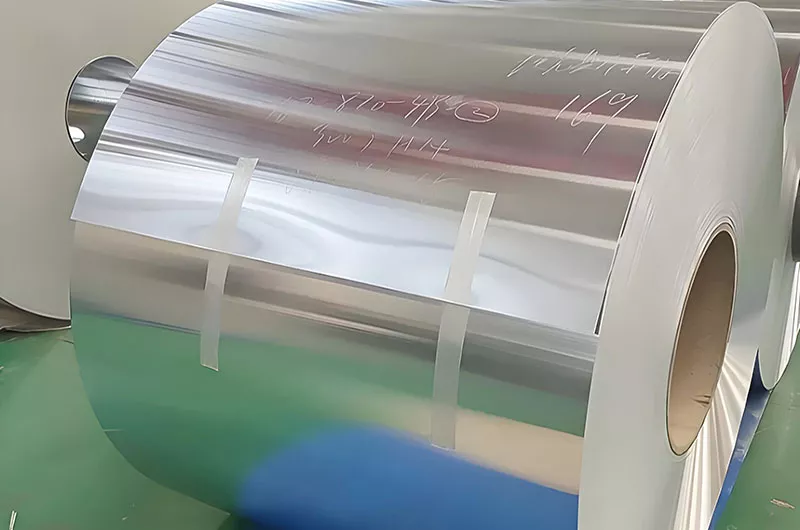
1235 Aluminum Foil Color Options
-
gold 1235 aluminum foil
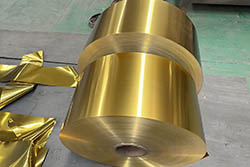
-
blue 1235 aluminum foil
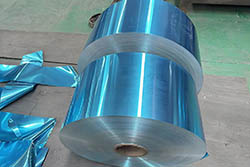
-
pink 1235 aluminum foil
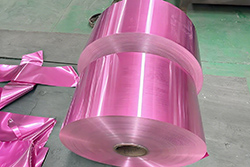
-
silver 1235 aluminum foil
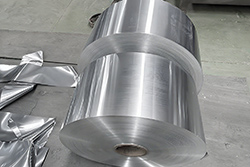
-
black 1235 aluminum foil
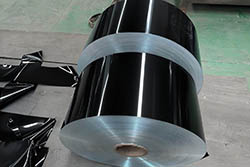
-
bronze 1235 aluminum foil
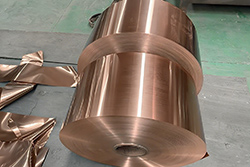
-
green 1235 aluminum foil
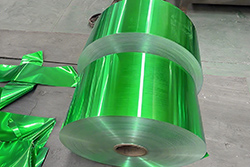
-
white 1235 aluminum foil
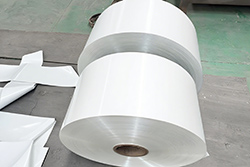
Advantages of 1235 Aluminum Foil
- Good mechanical properties, can meet the use requirements of automatic packaging machinery, but lack of softness, low tear strength, easy to process, can be compounded with plastic, film, paper and other packaging materials, and easy to color and print.
- Light weight, which is conducive to reducing transportation costs.
- No thermal adhesion, not acid and alkali resistant, easy to curl.
- It has a metallic luster, good light-shielding properties, strong reflective ability to light, and the luminous rate can reach 95%.
- It is not easy to be corroded, has good barrier properties, is moisture-proof, waterproof, has strong airtightness, and has box-keeping properties.
- The shape is stable at high and low temperatures, and the temperature does not shrink or deform when the temperature is between -73 and 371°.
1235 Aluminum Foil Standards
- ASTM B479
- QQA-1876
1235 Aluminum Foil Characteristics
- Flexibility and Formability: 1235 aluminum foil is very suitable for applications requiring bending or forming without cracking. The elongation rate in the annealed state is up to 35%.
- Thermal and Electrical Conductivity: The inherent conductivity of 1235 foil makes it suitable for applications such as heat exchangers, electrical shielding, and capacitor components.
- Excellent Barrier Properties: Its nearly pure aluminum composition provides excellent moisture-proof, oxygen-proof, and light-blocking properties, which are crucial for preserving food and pharmaceuticals.
- High Ductility and Workability: In the annealed (O temper) state, 1235 aluminum foil is very soft and easy to form, making it ideal for processes requiring bending or shaping without cracking.
- Strength Enhancement through Work Hardening: When cold-worked into H temper series (H12, H14, H16, H18), its tensile strength increases while maintaining an acceptable level of elongation.
Aluminum Alloy 1235 Foil Mechanical Properties
| Elongation (Annealed): 1 | 35 |
| Elongation (H12): | 12 |
| Elongation (H14): | 9 |
| Elongation (H16): | 6 |
| Elongation (H18): | 5 |
| Tensile Strength (Annealed): 2 | 13 x 1000 psi |
| Tensile Strength (H12): | 16 x 1000 psi |
| Tensile Strength (H14): | 18 x 1000 psi |
| Tensile Strength (H16): | 21 x 1000 psi |
| Tensile Strength (H18): | 24 x 1000 psi |
| Yield Strength (Annealed): 3 | 5 x 1000 psi |
| Yield Strength (H12): | 15 x 1000 psi |
| Yield Strength (H14): | 17 x 1000 psi |
| Yield Strength (H16): | 20 x 1000 psi |
| Yield Strength (H18): | 22 x 1000 psi |
1 % in 2 inches
2 x 1000 psi
3 0.2% offset
1235 Aluminum Foil Physical Properties
| Property | Description |
| High-purity aluminum base material, excellent conductivity, uniform surface color, and cleanliness | 1235 aluminum foil is made from high-purity aluminum with an aluminum content typically above 99.35%, ensuring excellent electrical conductivity. This high-purity material exhibits superior conductivity in electronic and electrical applications, helping to improve current transmission efficiency. Additionally, 1235 aluminum foil undergoes a fine rolling process, giving it a uniform luster and clean surface appearance, meeting the stringent material appearance and safety requirements of the food and pharmaceutical packaging industries. |
| Good flexibility, high ductility, suitable for deep drawing and composite processing | 1235 aluminum foil has excellent flexibility and ductility, allowing deep drawing and forming into complex shapes without breaking. This property makes it particularly suitable for producing flexible packaging and composite materials, such as food soft packaging bags and pharmaceutical blister packs. Moreover, 1235 aluminum foil has good adhesion with other materials like plastic films or paper in composite processes, providing excellent sealing and protective performance for multi-layer packaging. |
| Outstanding rust resistance, formability, and weldability | 1235 aluminum foil offers excellent rust resistance, allowing it to withstand air and moisture corrosion while maintaining material integrity and aesthetics. This corrosion resistance ensures a long service life even in humid environments. Additionally, 1235 aluminum foil has excellent formability and weldability, facilitating mechanical or manual welding processes for fabrication and sealing. In the packaging industry, its welding sealability ensures the airtightness of packages, protecting contents from external contamination and oxidation. |
1235 Aluminum Foil Functional Features
- Strong Barrier Property: Provides effective resistance against oxygen, moisture, and light, extending the shelf life of food products.
- Good Thermal Conductivity: Suitable for baking packaging and other heat transfer applications.
- Electromagnetic Interference Resistance: Used in cable shielding layers to effectively block electromagnetic waves.
Aluminum Alloy 1235 Composition
1235 aluminum foil contains at least 99.35% aluminum, making it one of the highest-purity aluminum foils on the market. The remaining composition includes trace elements such as iron and silicon (combined content up to 0.65%) and minor amounts of copper, magnesium, manganese, vanadium, zinc, titanium, and other elements, with a total content of up to 0.03%. This high purity gives it excellent ductility, toughness, and corrosion resistance.
| Element | Composition (%) |
| Aluminum (Al) | ≥99.35% |
| Silicon + Iron (Si + Fe) | ≤0.65% |
| Copper (Cu) | ≤0.05% |
| Manganese (Mn) | ≤0.05% |
| Zinc (Zn) | ≤0.10% |
| Other (Ti, Mg, etc.) | ≤0.06% each |
Comparison of chemical composition of 1000 series aluminum foil
| Grade | Si | Fe | Cu | Mn | Mg | Cr | Ni | Zn | Al |
| 1050 | 0.25 | 0.4 | 0.05 | 0.05 | 0.05 | – | – | 0.05 | 99.5 |
| 1060 | 0.25 | 0.35 | 0.05 | 0.03 | 0.03 | – | – | 0.05 | 99.6 |
| 1070 | 0.2 | 0.25 | 0.04 | 0.03 | 0.03 | – | – | 0.04 | 99.7 |
| 1100 | Si+Fe: 0.95 | 0.05-0.2 | 0.05 | – | – | 0.1 | – | 99 | |
| 1200 | Si+Fe: 1.00 | 0.05 | 0.05 | – | – | 0.1 | 0.05 | 99 | |
| 1235 | Si+Fe: 0.65 | 0.05 | 0.05 | 0.05 | – | 0.1 | 0.06 | 99.35 | |
Aluminum Alloy 1235 Foil Mechanical Properties
| Product Type | Alloy Temper | Thickness(mm) | Tensile Strength(Mpa) | Elongation(%)A100mm |
| Food and Household Foil | 1235 O | 0.01-0.024 | 40-100 | ≥1 |
| 0.025-0.04 | 45-100 | ≥2 | ||
| 0.041-0.07 | 45-100 | ≥4 | ||
| 1235 H18 | 0.01-0.07 | ≥135 | – | |
| aluminium foil for capacitor | 1235 H18 | 0.02-0.05 | ≥135 | – |
| aluminium foil for cable | 1235 O | 0.01-0.024 | 40-100 | ≥1 |
| 0.025-0.04 | 45-100 | ≥2 | ||
| 0.041-0.07 | 45-100 | ≥4 | ||
| aluminium foil for adhesive tape | 1235 O | 0.012-0.04 | 50-90 | ≥1 |
| 1235 H18 | ≥135 | – | ||
| 1235 O | 0.03-0.07 | 60-100 | ≥2 |
1235 Aluminum Foil Applications
| Application Field | Specific Uses | Description |
| Food and Beverage Packaging | Food Packaging, Beverage Packaging, Flexible Packaging | 1235 aluminum foil, with its excellent moisture resistance and odor protection properties, is widely used in food and beverage packaging. It effectively blocks air, light, and moisture, maintaining the freshness and flavor of food. It is commonly used in flexible packaging bags, chocolate packaging, dairy product seals, instant meal box liners, and coffee and tea packaging. Additionally, its non-toxicity and recyclability meet the environmental requirements of food packaging. |
| Pharmaceutical Packaging | Blister Packaging, Tablet Protective Lining | In the pharmaceutical field, 1235 aluminum foil is primarily used for blister packaging and tablet protective lining. It has excellent barrier properties that protect medications from moisture, oxygen, and light, ensuring the stability of drug efficacy. Pharmaceutical foil is often laminated with PVC or PVDC materials to create sealed packaging, making it convenient for long-term storage and transportation. Moreover, 1235 aluminum foil offers easy tearability, making it convenient for patients to access medications. |
| Electronic Applications | Lithium-ion Battery Cathode, Capacitor Foil, Cable Shielding Material | 1235 aluminum foil is used in the electronics industry for lithium-ion battery cathodes, capacitor foil, and cable shielding materials. As a current collector in lithium batteries, 1235 aluminum foil has excellent conductivity and chemical stability, ensuring efficient energy transfer. For capacitors, its thin and uniform structure makes it a critical component for energy storage. Additionally, in cable shielding, 1235 aluminum foil effectively prevents electromagnetic interference, ensuring stable signal transmission. |
| Industrial Applications | Insulation Material, Reflective Material, Aluminum Foil Tape | 1235 aluminum foil is widely used in industrial applications as insulation material, reflective material, and tape backing. Its high reflectivity and corrosion resistance make it an ideal choice for building insulation layers and HVAC (Heating, Ventilation, and Air Conditioning) systems. In reflective applications, 1235 aluminum foil is used in solar reflectors and lighting equipment to improve energy efficiency. Additionally, aluminum foil tape, known for its weather resistance and adhesion, is commonly used for sealing air conditioning ducts, cable wrapping, and equipment repairs. |
| Household Applications | Food Wrap, Baking Trays, BBQ Foil, Disposable Tableware | 1235 aluminum foil is an essential material in daily life, commonly used for food wrap, baking trays, BBQ foil, and disposable tableware. Its excellent thermal conductivity ensures even heating of food, while its oil resistance and anti-fouling properties make cleaning easier. Furthermore, its flexibility and high-temperature resistance make it ideal for baking and grilling applications. |
| Special Applications | Geochemical Sample Protection, Artistic Decoration, Cigarette Packaging | 1235 aluminum foil also has unique applications in specialized fields, such as geochemical sample protection, art and decoration, and cigarette packaging. In geochemical research, it is used as a sealing material to prevent sample contamination during transportation and storage. In the art and decoration sector, its metallic luster and flexibility make it suitable for creating metallic-looking decorative items and creative designs. In the tobacco industry, 1235 aluminum foil serves as a cigarette inner lining, maintaining the freshness of cigarettes while enhancing the packaging's premium appearance. |
Food Packaging
- Anti-oxidation packaging for baked goods (bread, cakes).
- Barrier packaging for fresh meat, seafood, and other perishable products.
- Coffee packaging, baking tray liners, etc.
Industrial Applications
- Aluminum Foil Tape: Used for making aluminum foil tape with high adhesion and anti-aging properties.
- Cable Foil: Used as a shielding layer for communication cables, replacing traditional light-blocking materials.
- Battery Foil: Used as a positive current collector in lithium-ion batteries, enhancing conductivity.
- Bottle Cap Material: Used to produce aluminum anti-theft bottle caps, combining lightweight and sealing performance.
1235 Aluminum Foil Application Specification Parameter Table
| Category | Temper | Thickness (mm) | Application |
| Aluminum Foil Tape | O | 0.015-0.03 | Made from 1235 aluminum foil as the base material, processed with lamination, printing, and adhesive coating; it features good thermal insulation, strong adhesion, and aging resistance. |
| Cable | O | 0.015-0.05 | Used as an insulation layer in cables, offering good conductivity, insulation, and corrosion resistance. |
| Lithium-Ion Battery | H14 | 0.012-0.02 | Used as a separator material in the production of lithium-ion batteries. |
| Insulation | O | 0.015-0.02 | The high reflectivity and thermal conductivity of 1235 aluminum foil make it an excellent choice for insulation, especially in the construction industry. |
| Electrical Applications | H14 | 0.015-0.05 | Due to its good conductivity, it can be used to produce capacitors, cables, and other electrical components. |
| Heat Exchanger | O | 0.015-0.05 | Used in heat exchangers due to its thermal conductivity and corrosion resistance. |
| Flexible Packaging | O | 0.012-0.02 | Used in the food and pharmaceutical industries for items like pouches and blister packs. |
| Cigarette Packaging | O | 0.006-0.007 | Commonly used as a lining for cigarette packaging to protect the product from moisture and oxygen. |
1235 Aluminum Foil Production Process
1235 aluminum foil is typically produced by casting high-purity aluminum and then undergoing a series of rolling processes. These processes reduce the material's thickness to extremely fine specifications — ranging from approximately 0.016 to 0.2 mm (even thinner for specific applications) — while ensuring a smooth, uniform surface and precise dimensional tolerances.
- Casting: Melting aluminum ingots and casting them into thin sheets.
- Hot Rolling: The cast sheets are then hot rolled to reduce thickness and enhance mechanical properties.
- Cold Rolling: The hot rolled sheets are further cold rolled to achieve the desired thickness, smoothness, and surface finish.
- Annealing: The foil is placed in an annealing furnace for heat treatment to improve softness and ductility.
- Final Processing: The foil may undergo additional processing such as slitting, cutting, and surface treatment to meet specific customer requirements.
Why Choose Haomei 1235 Aluminum Foil
- The surface of 1235 aluminum foil is clean and smooth, free from corrosion, voids, folds, browning, grooves, edge defects, wrinkles, or unevenness.
- The surface of 1235 aluminum foil shows no significant color variation.
- The edges of the aluminum foil are neat, with no burrs, misalignment, dents, or collapses.
- The width and thickness of the aluminum foil are strictly controlled, with a tolerance within ±4%.
What is the Difference Between 8011 and 1235 Aluminum Foil?
- 1235 Aluminum Foil: Mainly used for flexible packaging, suitable for applications requiring thinness and flexibility.
- 8011 Aluminum Foil: Widely used with higher strength and corrosion resistance, suitable for various packaging and industrial applications.
| Feature | 1235 Aluminum Foil | 8011 Aluminum Foil |
| Chemical Composition | Mainly contains 99.35% aluminum with almost no other alloy elements | Contains manganese (Mn) and magnesium (Mg) elements to enhance strength and corrosion resistance |
| Process | Lower annealing temperature, similar annealing time to 8011 aluminum foil | Higher annealing temperature with higher tensile strength |
| Tensile Strength | Lower | Higher |
| Elongation | Relatively high | Similar to 1235 aluminum foil |
| Applications | Mainly used for flexible packaging, such as milk packaging, cigarette packaging, beverage packaging, food packaging bags, etc. Commonly used in snack bags, cigarette packaging, chocolate packaging, etc. | Widely used in food containers, food packaging, pharmaceutical packaging, industrial applications, etc. Commonly found in household use, pharmaceutical packaging (with good moisture-proof, light-blocking, and barrier properties), and industrial uses (waterproof materials, air conditioning foil, cable foil, ventilation ducts, insulation materials, etc.) |
| Characteristics | Very thin (0.006mm-0.009mm), suitable for applications requiring flexibility | Suitable for various applications, environmentally friendly and recyclable, with a wide thickness range (up to 0.2mm, minimum thickness of 0.006mm), with higher strength and corrosion resistance |
Comparison of 1235 Aluminum Foil with Similar Alloys
- 1145 Alloy: Nearly identical in composition but less common. 1235 is often used as a substitute.
- 3003/8011 Alloys: Contain manganese or iron, providing higher strength but lower formability compared to 1235.
Due to its comparable chemical composition and physical properties, manufacturers often use 1235 aluminum foil as a substitute for similar alloys like 1145.
With its high aluminum content (99.35%), exceptional ductility, excellent barrier properties, and outstanding thermal and electrical conductivity, 1235 aluminum foil is a versatile material used in various applications, from everyday household use to specialized industrial and pharmaceutical applications. Its production process ensures strict control over thickness and surface quality, enhancing its reliability and effectiveness as a material choice.
How to Choose Between 1235 and 8011 Aluminum Foil?
| Attribute/Aspect | 1235 Aluminum Foil | 8011 Aluminum Foil |
| Alloy Composition | Pure aluminum foil (Al content not less than 99.35%) | Aluminum with iron and silicon as major alloy elements |
| Main Use | Packaging material (such as food, medicine, cigarettes, etc.) | Packaging material and industrial applications (such as food packaging, industrial foils, insulation materials, etc.) |
| Strength | Lower compared to 8011 | Higher strength |
| Corrosion Resistance | Lower compared to 8011 | Better corrosion resistance |
| Cost | Lower cost | Higher cost due to alloying elements |
1235 vs. 1145 Aluminum Foil
| Parameter | 1235 Foil | 1145 Foil |
| Aluminum Content | ≥99.35% | ≥99.45% |
| Cost & Supply | Lower cost, abundant supply | Declining availability, higher cost |
| Applications | Dominates packaging, batteries, tapes | Historically used in capacitors |
| Performance | Near-identical properties; direct substitute | Slightly higher purity |
Limitations of 1235 Aluminum Foil
Strength: Lower mechanical strength compared to other aluminum alloys; may require lamination with other materials to enhance strength. Chemical Resistance: In highly acidic or alkaline environments, additional coatings may be necessary to prevent corrosion.
Why Choose 1235 Aluminum Foil?
- Cost-Effective: No need for heat treatment, energy consumption is lower than 2xxx/5xxx alloys.
- Versatility: Suitable for coating, printing, and composite materials.
- Sustainability: Fully recyclable, minimizing property loss to the greatest extent.
Haomei Aluminum Foil Product Range
- 8011 Aluminum Foil 8011 possesses multiple excellent properties, including outstanding barrier ability against oxygen, moisture, and light. It is commonly used for pharmaceutical packaging, food packaging, aluminum foil tape, cable wraps, aluminum bottle caps, and more.
- 8021 Aluminum Foil 8021 is known for its exceptional barrier properties, safety, and good processing performance. It effectively blocks moisture and oxygen, is non-toxic and odorless, and is suitable for cold-formed pharmaceutical foil packaging, aluminum foil for lithium battery pouches, etc.
- 8006 Aluminum Foil With a bright surface, higher strength, and excellent anti-wrinkle performance, 8006 foil resists edge wrinkling during stamping and maintains a flat appearance. It is ideal for producing wrinkle-free food containers, airline meal boxes, and wrinkle-free pastry cups—scenarios requiring high standards in appearance and performance.
- 8079 Aluminum Foil Known for high strength and superior barrier properties, 8079 foil also has good elongation and pressability. It is widely used in food container materials, pharmaceutical capsules, food packaging, and battery pouch foil, offering reliable protection and enhanced visual appeal of packaging.
- 1060 Aluminum Foil 1060 aluminum foil belongs to the pure aluminum category (aluminum content ≥99.6%) and boasts excellent ductility and formability, along with good thermal conductivity and corrosion resistance. It is widely used in aluminum gaskets, electrolytic capacitors, and automotive heat shields.
- 1100 Aluminum Foil 1100 foil has slightly higher strength among pure aluminum foils and can be stamped, bent, and processed. It is commonly used in kitchenware (such as baking tray liners and foil sheets), insulation materials, and isolation layers of electronic components.
- 1070 Aluminum Foil Due to its high purity, 1070 aluminum foil offers superior electrical conductivity. It is suitable for applications such as capacitor electrode foil, precision electronic component packaging, high-end food packaging, and materials used in scientific research.
- 1050 Aluminum Foil With an aluminum content ≥99.5%, 1050 aluminum foil has balanced overall properties and is commonly used in capacitors, cable wraps, aluminum foil gaskets, and heat sinks. It is a widely used general-purpose pure aluminum foil material.
- 3003 Aluminum Foil Compared to pure aluminum foil, 3003 foil offers higher strength while maintaining good ductility and corrosion resistance. It is widely used in food containers (such as meal boxes and easy-open can lids), building soundproofing materials, HVAC ducts, and packaging materials.
- 3004 Aluminum Foil 3004 aluminum foil has greater strength and hardness than 3003, with good formability, suitable for deep-drawing processing. It is mainly used for meal box materials, aluminum honeycomb cores, beverage can bodies, and beverage packaging—meeting the industrial and packaging needs for high strength and formability.
- 5052 Aluminum Foil 5052 aluminum foil is a medium-strength alloy foil commonly used in scenarios requiring relatively high strength and corrosion resistance, such as honeycomb materials, door panel materials, meal box materials, and corrosion-resistant containers in the chemical industry. It is a medium- to high-end aluminum foil alloy with well-balanced comprehensive performance.
Users viewing this material also viewed the following
